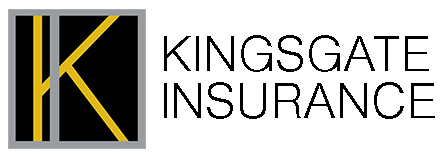How to Save for Retirement as a Small Business Owner
As a small business owner, you might feel saving for retirement is too complicated or too expensive. However, you shouldn’t rely solely on your business as a retirement plan; it’s risky and often doesn’t work out as expected.
One of the first steps in saving for retirement as a small business owner is determining how much you need to save based on your goals and plans. You can do this with an online retirement calculator or the guidance of an expert. The amount you need to save will help you decide what type of retirement account to use.
There are several retirement account options for self-employed small business owners, including SEP IRA, SIMPLE IRA, and Solo 401(k). Not only do these accounts help save for retirement, they can offer tax benefits and provide benefits to employees.
Some of the available options are listed below:
Traditional IRA. IRA stands for individual retirement account. These accounts are investing tools for individuals to allocate their retirement savings. You can get tax deductions for your contributions to a traditional IRA. If you withdraw from an IRA before age 59 ½, you are usually subject to an early withdrawal penalty.
This option is good for those just starting on their retirement saving journey or saving less than $6,000 a year. Additionally, if you’re leaving an employer to start your own business, you can roll your prior 401(k) into an IRA. There is no employee element to this plan. If your business has employees, they can set up their own plans and make contributions.
An IRA is one of the easier ways for self-employed individuals to start saving for retirement. Opening an IRA with an online broker is relatively quick and easy.
SEP IRA. SEP stands for simplified employee pension. Self-employed individuals, such as small business owners, can set up SEP IRAs, which adhere to the same taxation rules as a traditional IRA. In 2019, contributions were limited to the lesser of 25% of compensation or $56,000. Employers who set up a SEP IRA for company employees can deduct contributions from their reported business income and possibly get a lower tax rate on that income.
Keep in mind, employers must contribute an equal percentage for each eligible employee, and the owner is counted as an employee. So, if you contribute 15% of your compensation for yourself, you must also contribute that percentage for each employee who is eligible. For this type of IRA, employees can’t contribute and the IRS taxes their withdrawals as income. The upside of this type of account is it’s simpler than a Solo 401(k) to maintain with less paperwork and no annual reporting to the IRS. They’re also somewhat flexible in that you do not have to contribute every year. Alternatively, a drawback could be that you cannot put significant amounts away for your retirement without contributing the same percentage for each employee.
SIMPLE IRA. This is a good option for larger small businesses. It can be used by most businesses with 100 or fewer employees. SIMPLE doesn’t just mean it’s easy to use—it stands for savings incentive match plan for employees. They require minimal paperwork, just an initial plan document and annual disclosures to employees. Business owners can make a mandatory 2% contribution to all employees or an optional matching contribution of up to 3%. The tax advantage for this option is that contributions are deductible, and the contributions made to employee accounts can be deductible as business expense. The plan is established through a financial institution that administers it, and it can be completed through an online broker. Accounts are owned by employees, but you may have some mandatory contributions to employee accounts, which can get expensive if you have a large number of employees participating.
Solo 401(k). This option is good for someone with no employees other than a spouse. It’s a government-registered savings plan that is designed for small business owners. Businesses that employ only the business’s owners and their spouses are eligible. This plan works similarly to an employer-offered 401(k)—contributions are pre-tax, and distributions after 59 ½ are taxed. While you aren’t eligible for this plan if you have employees other than your spouse, an employed spouse is able to contribute the standard employee limit amount for a 401(k), plus you can add employer contributions. This can significantly increase what you can save as a couple. This type of plan can also be easily initiated with an online broker, but you will need to file paperwork with the IRS each year once you have more than $250,000 in your account.
Hopefully this gives you a general idea of some of the options available to help you save for your future. Thinking about retirement should always be a part of your financial plan, and it’s important you decide whether this is something you want to do yourself or if it’s worth hiring a financial adviser. Financial planners can help you analyze your situation and provide more details and intricacies of all the options described and more.
Sources:
- https://www.investopedia.com/terms/s/simple-ira.asp
- https://www.forbes.com/sites/davidrae/2019/02/08/small-business-retirement/#1055640cc6f9
- https://www.score.org/blog/3-retirement-options-small-business-owners
- https://www.lendingtree.com/business/personal-finance-tips-small-business-owner/
- http://www.plannersearch.org/assets/brochures/fpa_small%20business_web_060315.pdf







Leave a Reply
Want to join the discussion?Feel free to contribute!